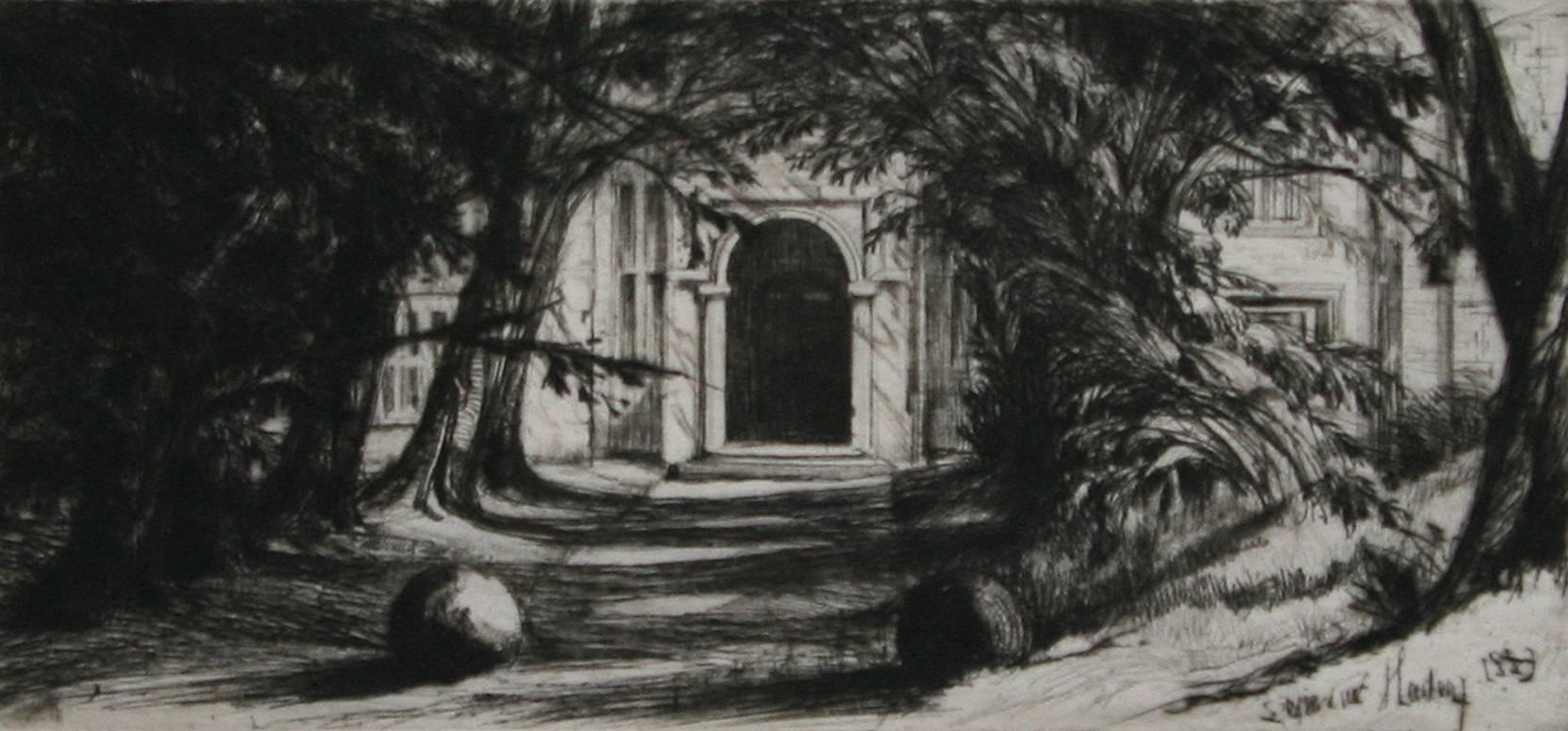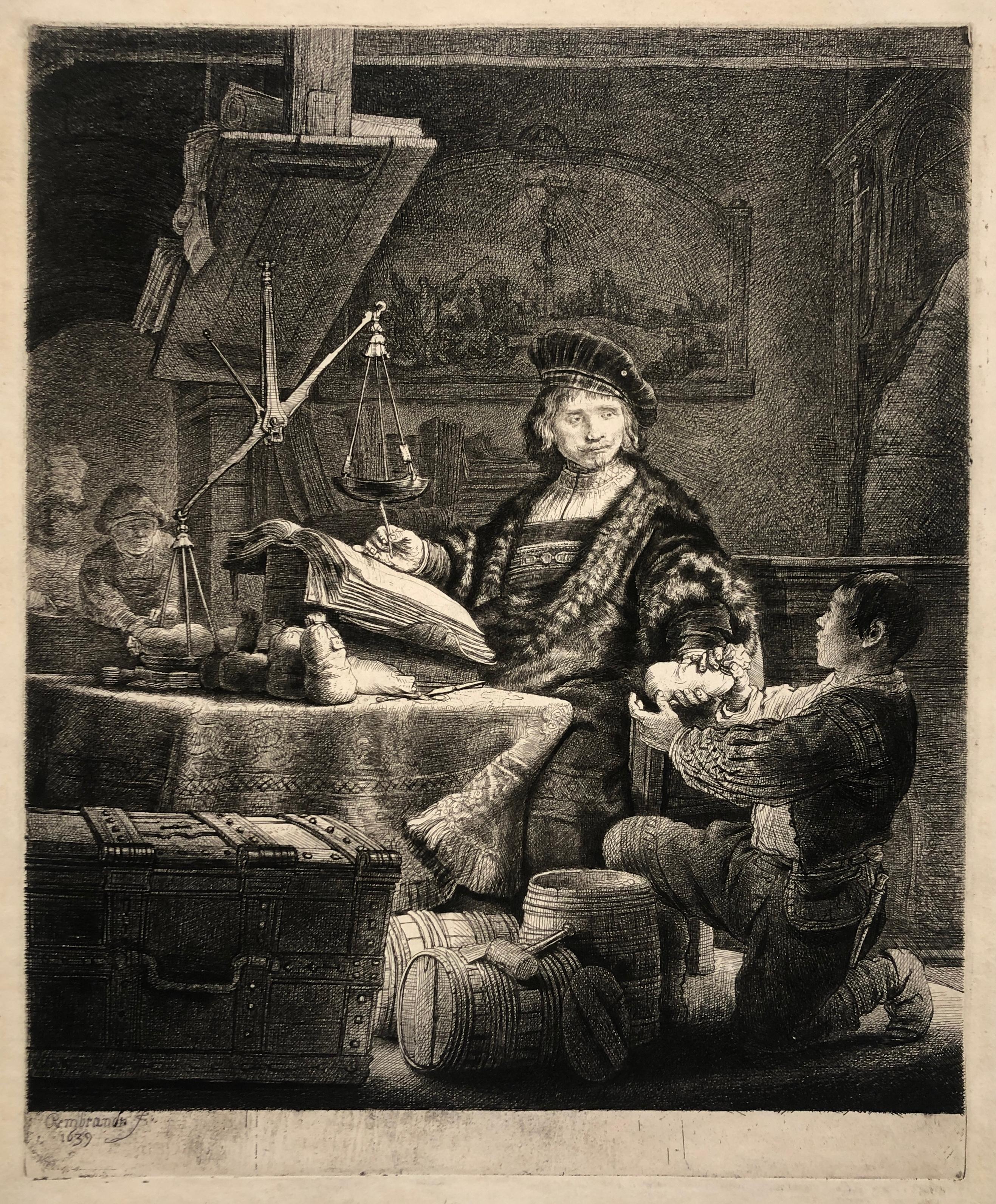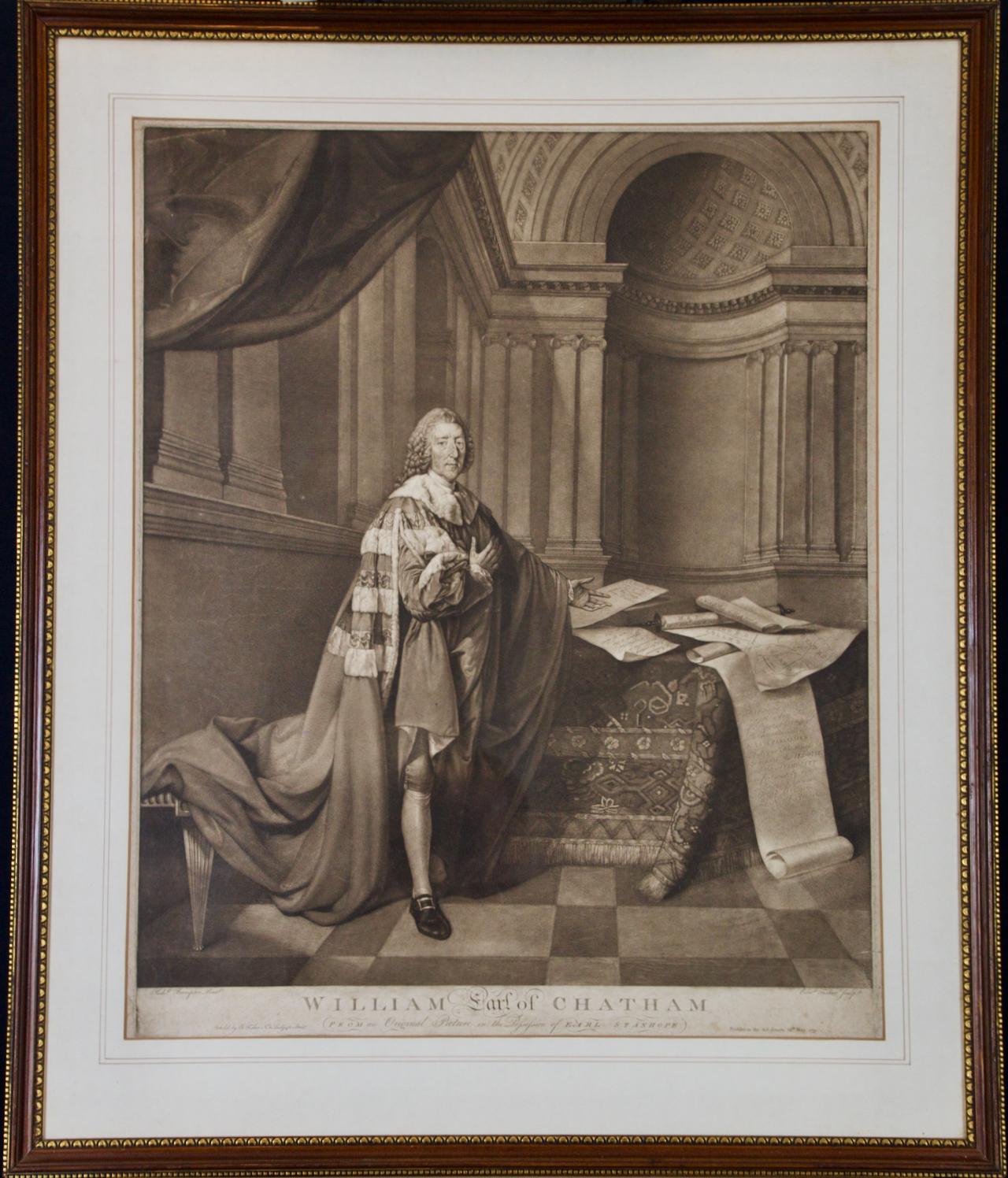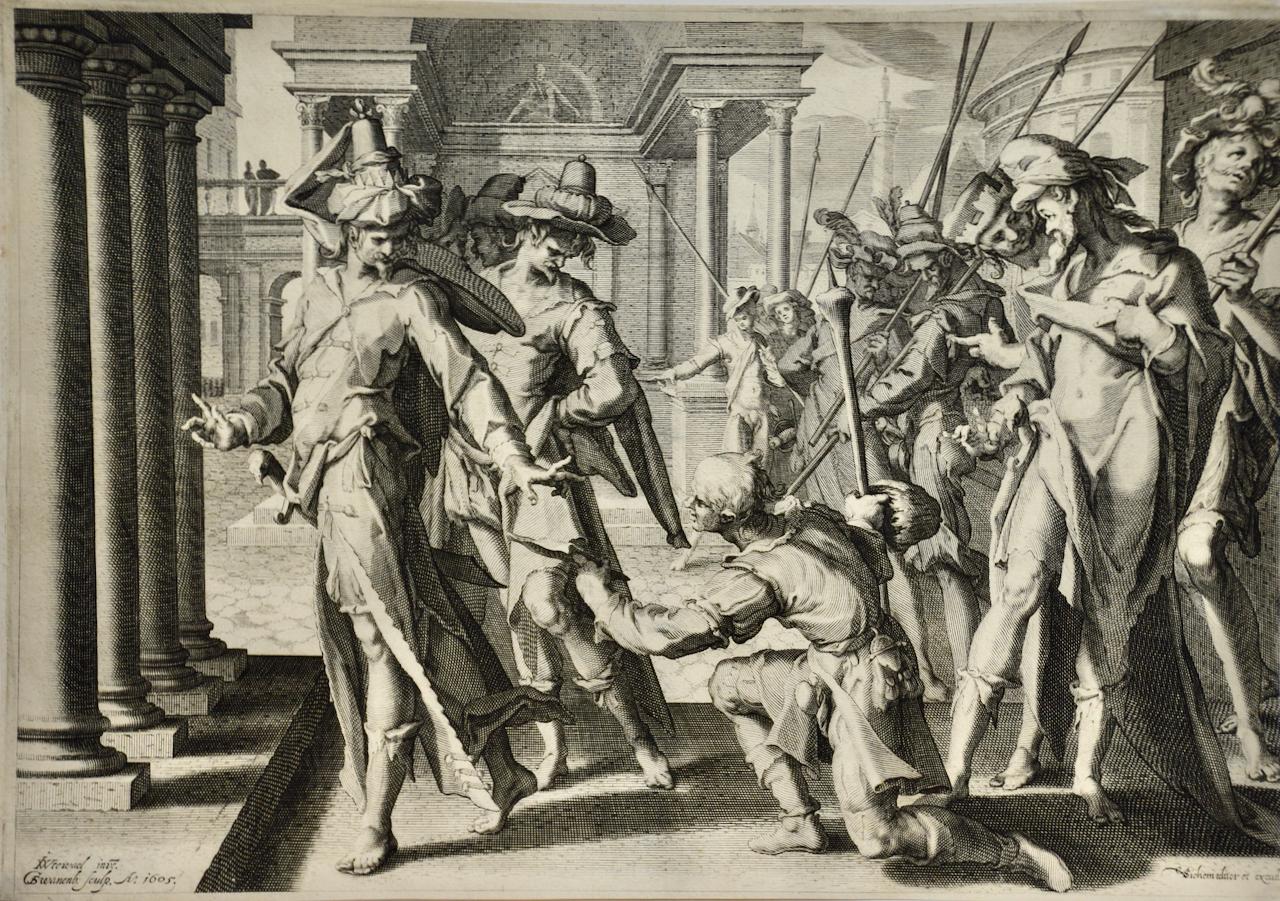Items Similar to The Giant Wheel (Carceri IX), (2nd State)
Want more images or videos?
Request additional images or videos from the seller
1 of 5
Giovanni Battista PiranesiThe Giant Wheel (Carceri IX), (2nd State)1749
1749
About the Item
This is a second state impression from three states.
- Creator:Giovanni Battista Piranesi (1720-1778, Italian)
- Creation Year:1749
- Dimensions:Height: 21.5 in (54.61 cm)Width: 16 in (40.64 cm)
- Medium:
- Movement & Style:
- Period:
- Condition:
- Gallery Location:Chicago, IL
- Reference Number:1stDibs: LU36531306003
About the Seller
5.0
Recognized Seller
These prestigious sellers are industry leaders and represent the highest echelon for item quality and design.
Established in 1955
1stDibs seller since 2016
12 sales on 1stDibs
Typical response time: 14 hours
Associations
International Fine Print Dealers Association
- ShippingRetrieving quote...Ships From: Chicago, IL
- Return PolicyA return for this item may be initiated within 7 days of delivery.
More From This SellerView All
- Venus and the Rose (2nd State)By Giorgio Mantovano GhisiLocated in Chicago, ILEngraving after Luca PenniCategory
16th Century Old Masters Prints and Multiples
MaterialsEngraving
- Landscape with the Prophets Ahias and JerobeamLocated in Chicago, ILEngraving after David Vinckboons (Malines 1576-1629 Amsterdam), executed by James Van Londerseel (Antwerp c. 1570 - 1624/25 Rotterdam)Category
17th Century Old Masters Prints and Multiples
MaterialsEngraving
- Landscape with Pair on Wooden BridgeBy Nicolaes de BruynLocated in Chicago, ILEngraving after Egidius Coninxloo (c. 1581 - 1619), executed by Nicolaes De Bruyn (Antwerp 1571 - 1652 Amsterdam) Unidentified watermarkCategory
Early 17th Century Old Masters Prints and Multiples
MaterialsEngraving
- Tobias and the AngelBy Hendrik GoudtLocated in Chicago, ILReferences: Bartsch, Dutuit and Hollstein 2Category
17th Century Old Masters Prints and Multiples
MaterialsEngraving
- St. Jerome in the DesertLocated in Chicago, ILEngraving by Joannes and Lucas van Doetecum (Deventer active by 1551 - circa 1569 Haarlem) in the manner of Peter Bruegel the ElderCategory
16th Century Old Masters Landscape Prints
MaterialsEngraving
- Christ and His Disciples Harvesting on the SabbathLocated in Chicago, ILEngraving after David Vinckboons (Malines 1576-1629 Amsterdam), executed by Jan van Londerseel (Antwerp c. 1570-1624/25 Rotterdam)Category
17th Century Old Masters Prints and Multiples
MaterialsEngraving
You May Also Like
- Set of Two 18th Century Engravings from William Hogarth's "Analysis of Beauty"By William HogarthLocated in Alamo, CAThe two plates in this set were created utilizing both engraving and etching techniques by William Hogarth in 1753, originally as illustrations of his book on aesthetics, entitled "Analysis of Beauty". Due to their popularity, these plates were later published separately. The publication line in the lower right reads: "Designed, Engraved, and Publish'd by Wm. Hogarth, March 5th 1753, according to Act of Parliament." Hogarth's original copper plates were refurbished where needed by James Heath and engravings were republished in London in 1822 by Braddock, Cradock & Joy. This was the last time Hogarth's copper plates were used for printing. Most were melted during World War I for the construction of bombs. These large folio sized "Analysis of Beauty" engravings are presented in antiqued gold-colored frames with double mats; the outer silk mats are light brown-colored and the inner mats are dark brown. Each frame measures 27.38" x 31.25" x 1.13". There is one tiny spot in the right margin of plate 1 and another in the lower margin; the latter could be from the printing process. The prints are otherwise in excellent condition. The "Analysis of Beauty" series is in the collection of many major museums, including: The British Museum, The Metropolitan Museum of Art, The Tate Museum, The Chicago Art Institute and The Fine Arts Museums of San Francisco. The first engraving (Plate 1) depicts a courtyard of statues which is filled with some of the most famous works of classical sculpture. The most important sculptures are surrounded by less impressive works. The Medicean Venus (#13) is in the center with a statue of Julius Caesar (#19) to the right, elevated on a pulley with a short, overdressed Brutus stands over the falling Caesar. The Apollo Belvedere (#12) is next. A judge stands to the right with his foot on a cherub (#16). Another crying cherub holds a gallows and wipes his tears with the judge's robe. A sphinx (#21) and the drunken Silenus (#107) are below the Venus. Michaelangelo's torso (#54) and a statue of Antonius (#6) are seen in the foreground. The Farnese Hercules (#3) and a bust of another Hercules (#4) under two statuettes of Isis are also included in the scene. The key to these objects is included in the form of a serpentine line winding around a cone (#26), Hogarth's "Line of Beauty". For Hogarth the winding line is an essential element of beauty in art. Hogarth's theory of beauty is communicated in this plate. Plate 2 is thought to represent the Wanstead Assembly, with the Earl of Tynley and his household. It is an adaptation of a scene in the Happy Marriage series, which complements Hogarth's Marriage à la Mode...Category
Mid-18th Century Old Masters Interior Prints
MaterialsEtching, Engraving
- Mytton HallBy Sir Francis Seymour Haden, R.A.Located in Storrs, CTMytton Hall. 1859. Etching and drypoint. Schneiderman catalog 19 state .iii/v. 4 13/16 x 10 5/16 (sheet 5 3/4 x 10 15/16). As published in Études à l'eau-forte XXIV. Illustrated: Guichard, British Etchers, 1850-1940. An extremely rich impression printed on fine laid paper. Signed in the plate. Housed in a 16 x 20-inch archival mat. Mytton Hall is a fifteenth century mansion house situated on the River Ribble, at Whalley near Blackburn, Lancashire. Haden used to stay there when he went salmon fishing. R. Gutekunst, the dealer who inherited the rights to sell all of Francis Seymour Haden's remaining prints upon his death, noted on the front of his catalogue in July 1911: "It may be useful to add that those impressions of Sir Seymour Haden's early and rare etchings, which were published in portfolio form in Paris in 1865-66, under the title Études à l'eau-forte have, with the exception of one or two sets, never been signed in autograph by Sir Seymour, and do not, of course, bear any stamp of any kind." Although Gutekunst had impressions of the majority of Haden's works for sale, he had no remaining impressions of Mytton Hall. Henry Taylor...Category
Mid-19th Century Old Masters Landscape Prints
MaterialsDrypoint, Etching
- Jan Uytenbogaert, The GoldweigherBy Rembrandt van RijnLocated in Boston, MABartsch 281, Hind 167 iii/III, Nowell-Usticke 281, iii/III. A fine impression, with burr, as retouched by Baillie in 1792. With an unidentified collectors stamp, verso.Category
17th Century Old Masters Figurative Prints
MaterialsDrypoint, Etching
- The Heidelberg Tun: A Framed 17th Century Engraving of a Huge Wine CaskLocated in Alamo, CA"The Heidelberg Tun" is a 17th century engraving by an unknown artist. It depicts a famous huge ornamental wine cask that resided in the wine cellar of Heidelberg Castle. The cask shown here, built in 1664, is the second of four Heidelberg Tuns; the first was destroyed during the Thirty Years' War, between 1618 and 1648. This cask was built in 1664 when Karl Ludwig ordered Heidelberg cellar master...Category
Late 17th Century Old Masters Interior Prints
MaterialsEngraving
- Portrait of William Pitt, Earl of Chatham: Rare Framed Mezzotint after BromptonBy Edward FisherLocated in Alamo, CAThis is a large framed very rare hand-colored copperplate mezzotint engraved portrait of William Pitt, the Elder, 1st Earl of Chatham by Edward Fisher, published in London in 1779 after a painting by Richard Brompton. Pitt is depicted attired in a flowing regal appearing cape, standing in an ornate room with his left hand outstretched over a serious of manuscripts and scrolls that are laying on a table or desk to his left. The table is covered by a beautiful oriental carpet. The manuscripts include the Magna Carta, a map of the colonies, including Long Island and Staten Island, and papers entitled "A Plan for the Reconciliation between Great Britain and the Colonies", "A Motion Made in 1775 for the Recall of Troops from Boston", "A Provisional Act for Settling the Troubles in America Offered to the House of Lords in 1775", and "It is doing Nothing to repeal a few Scraps of Paper or Pieces of Parchment called Acts of Parliament. But our Business is to repeal the Ill-Will and the Animosity unfortunately now subsisting between Great Britain and North America". This engraving is held by the British Museum and the British Royal Collection Trust. This large framed mezzotint engraving is presented in a brown wood frame with gold-colored beaded inner and outer trim, and a cream-colored French mat. The frame measures 31.63" high by 26.63" wide by 0.75" deep. There are three short tears along the right edge and mild creasing in the left upper, left lower and right lower corners. It is otherwise in very good condition. William Pitt (1708-1778) was a member of the British parliament from 1735 to 1761 and prime minister from 1766 to 1768. Pitt was an advocate for the American colonies leading up to the War of Independence. He called for an amiable relationship between Great Britain and the colonies and opposed the Stamp Act and military action in America. He advocated for a withdrawal of English troops from Boston in 1775 and the settling of troubles in America, as two of his manuscripts on the table outline. Pitt's colleague, Lord Shelburne (later the Marquess of Lansdowne) shared his sympathies and after Pitt's death, signed a peace treaty with the United States in 1782. The American city of Pittsburgh, Pennsylvania is named for William Pitt, the Elder. The name originated when the conflict between the British and French over territorial claims in the Northeast were settled in 1758. General John Forbes and his British army, supported by the American colonial troops, expelled the French from Fort Duquesne (which had been constructed by the French in 1754). Forbes re-named the site for William Pitt the Elder, who at the time was a British statesman. The earliest known reference to the new name, Pittsburgh, is in a letter sent from General John Forbes to Pitt, dated November 27, 1758. Pitt's son, William Pitt, the Younger, like his father, also served as British Prime Minister. Edward Fisher (1730-1785) was born in Ireland in 1730. He was originally a hatter, but learned engraving in London. He became a member of the Incorporated Society of Artists in 1766, and exhibited there fourteen times between 1761 and 1776. He engraved more than sixty portraits. In addition to this portrait of William Pitt, Earl of Chatham, after Richard Brompton he engraved several portraits after Brompton, including George, Earl of Albemarle, as well as engraved portraits after paintings by Joshua Reynolds, including the Shakespearean actor David Garrick, Hugh, Earl of Northumberland, and Elizabeth, Countess of Northumberland and Laurence Sterne, and Hope Nursing Love, as well as Robert Brown, after Mason Chamberlin, Colley Cibber, after Jean-Baptiste van Loo, Christian VII of Denmark, after Nathaniel Dance, Simon, Earl Harcourt, after Hunter, Roger Long, after Benjamin Wilson...Category
Late 18th Century Old Masters Portrait Prints
MaterialsMezzotint
- "Allegory of Justice": A 17th Century Old Master Engraving by van SwanenburgBy Willem van SwanenburgLocated in Alamo, CAThis old master engraving entitled "Allegorie op de Rechtspraak" is by Willem van Swaanenburg after a painting by Joachim Wtewael, published by Ch...Category
Early 1600s Old Masters Interior Prints
MaterialsEngraving
Recently Viewed
View AllMore Ways To Browse
Antique State
Antique Wheel
Used Three Wheeler
Piranesi Etchings
Piranesi Engraving
Giovanni Battista Piranesi Etchings
Antique Three Wheeler
Old Antique Wheel
Piranesi Print State
Piranesi Carceri
Piranesi Prints Carceri
Christo Barrels
Brainwash Print Watch
G Harvey Signed Print
John Bald
Roy Oval Office
Johnny Bull
Ralph Kerstner





